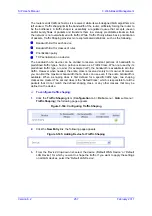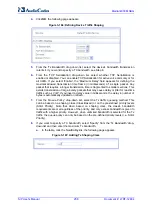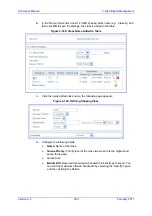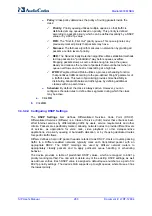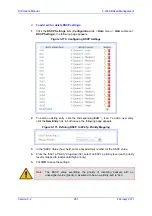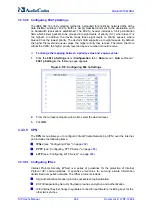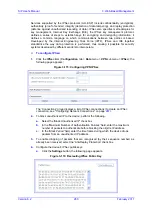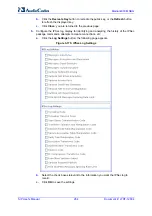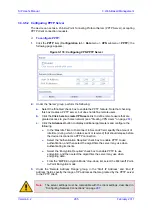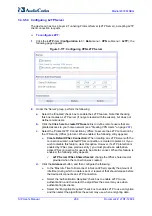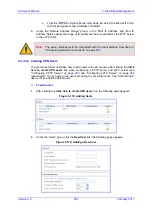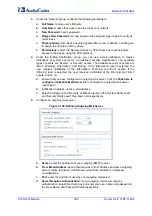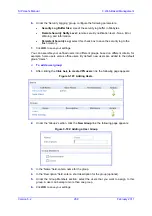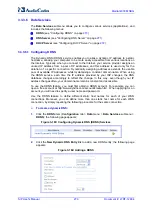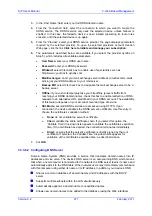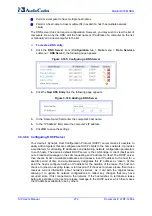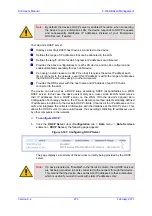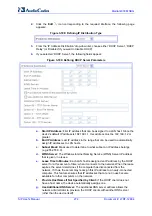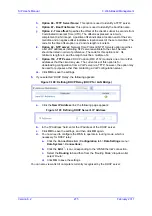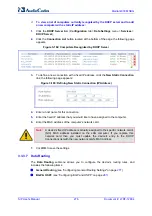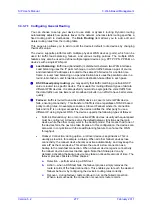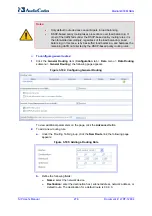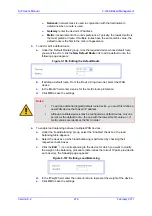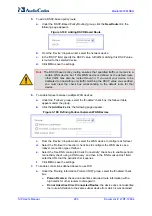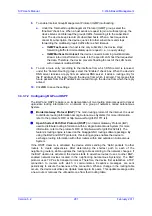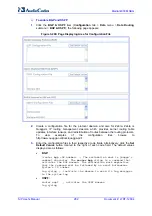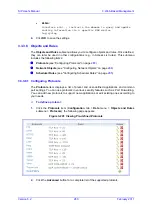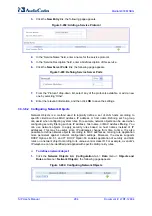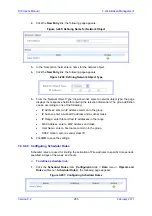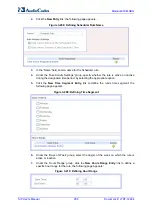
Version 6.2
271
February 2011
SIP User's Manual
3. Web-Based Management
3.
In the 'Host Name' field, enter your full DDNS domain name.
4.
From the 'Connection' field, select the connection to which you want to couple the
DDNS service. The DDNS service only uses the selected device, unless failover is
enabled. In this case, the failed-to device is used instead (assuming its route rules
consent), until the selected device is up again.
5.
From the 'Provider', select your DDNS service provider; the page displays parameters
required by the selected provider. To open the selected provider's account creation
Web page, click the link
Click here to initiate and manage your subscription
.
6.
The parameters described below are available if you select the provider dyndns (in
Step 5), which includes all available parameters.
•
User Name:
enter your DDNS user name.
•
Password:
enter your DDNS password.
•
Wildcard:
select this check box to enable use of special links such as
http://www.<your host>.dyndns.com.
•
Mail Exchanger:
enter your mail exchange server address to redirect all e-mails
arriving at your DDNS address to your mail server.
•
Backup MX:
select this check box to designate the mail exchange server to be a
backup server.
•
Offline:
if you wish to temporarily take your site offline (prevent traffic from
reaching your DDNS domain name), check this box to enable redirection of DNS
requests to an alternative URL, predefined in your DDNS account. The availability
of this feature depends on your account's level and type of service.
•
SSL Mode:
secured DDNS services are accessed using HTTPS. Upon
connection, the device validates the DDNS server's certificate. Use this entry to
choose the certificate's validation method.
♦
None:
do not validate the server's certificate.
♦
Chain:
validate the entire certificate chain. If you select this option, the
'Validate Time' drop-down lists appears to validate the certificate's expiration
time. If the certificate has expired, the connection terminates immediately.
♦
Direct:
ensures that the server's certificate is directly signed by the root
certificate. If selected, the 'Validate Time' drop-down lists appears for
validation of the certificate's expiration time, as described above.
7.
Click
OK
.
3.3.3.6.2 Configuring DNS Server
Domain Name System (DNS) provides a service that translates domain names into IP
addresses and vice versa. The device's DNS server is an auto-learning DNS, which means
that when a new computer is connected to the network the DNS server learns its name and
automatically adds it to the DNS table. Other network users may immediately communicate
with this computer using either its name or its IP address. In addition, your device's DNS:
Shares a common database of domain names and IP addresses with the DHCP
server
Supports multiple subnets within the LAN simultaneously
Automatically appends a domain name to unqualified names.
Allows new domain names to be added to the database (using the Web interface)
Summary of Contents for Mediant 800 MSBG
Page 2: ......
Page 366: ...SIP User s Manual 366 Document LTRT 12804 Mediant 800 MSBG Reader s Notes ...
Page 372: ...SIP User s Manual 372 Document LTRT 12804 Mediant 800 MSBG Reader s Notes ...
Page 390: ...SIP User s Manual 390 Document LTRT 12804 Mediant 800 MSBG Reader s Notes ...
Page 404: ...SIP User s Manual 404 Document LTRT 12804 Mediant 800 MSBG Reader s Notes ...
Page 616: ...SIP User s Manual 616 Document LTRT 12804 Mediant 800 MSBG Reader s Notes ...
Page 636: ...SIP User s Manual 636 Document LTRT 12804 Mediant 800 MSBG Reader s Notes ...
Page 652: ...SIP User s Manual 652 Document LTRT 12804 Mediant 800 MSBG Reader s Notes ...
Page 886: ...SIP User s Manual 886 Document LTRT 12804 Mediant 800 MSBG Reader s Notes ...

